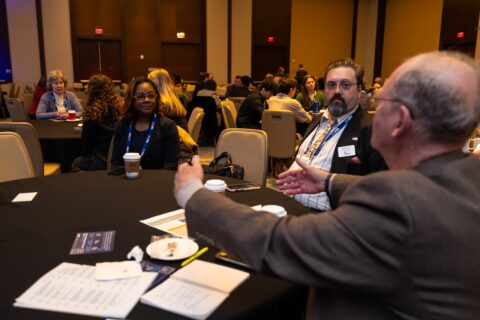The rules of Congress can change. The 117th Congress has written a new set of rules that would allow them to go after key priorities, like COVID-19 relief, climate, as well as revive Congressionally directed spending on projects – known as “earmarks.”
This past week, the House Appropriations Chair Rep. Rosa DeLauro announced that they will be accepting Members of Congress’ requests for Community Project Funding in appropriations bills for the upcoming 2022 fiscal year. This announcement is the first move in the 117th Congress to open up the process for the reincarnated Congressional “earmark” funding process.
Additionally, yesterday the House Committee on Transportation and Infrastructure Committee Chair Peter DeFazio (D-OR) and Chair of the Subcommittee on Highways and Transit Eleanor Holmes Norton (D-DC) announced the Committee will provide an opportunity for Members of Congress to submit requests for highway and transit project designations under a new formal process. Project submissions will likely be due by April by Members of Congress and will be done in conjunction with the reauthorization of the FAST Act, where NLC is playing an active role. The FAST Act is due in Committee by May and through Congress by September. The total of project designations may be around 3-6% of the transportation bill, but we will know more soon.
New Opportunities, Quick Timeline
These two new project-directed programs and processes indicate that cities have new opportunities to work directly with Congress in the next month or two to bring awareness to key local projects that are deserving of federal partnership and have full community support. Cities will need to be able to share projects in detail in the coming weeks, and so if you are meeting with Congress during the NLC Congressional City Conference, be sure to ask what their office’s process will be to receive project request as each office may differ.
Community Project Funding Process and Guardrails
The Community Project Funding has been redesigned to utilize the best parts of the past “earmark” process by directly connecting Congressional action with outputs in the community, but it will also have strong guardrails for accountability, transparency, and strong community support. These include:
Public Transparency and Accountability
- All Requests Online: Members are required to post every Community Project Funding request online simultaneously with their submission to the Committee. The website must be searchable. The House Appropriations Committee will establish an online “one-stop” link to all House members’ project requests.
- Early Public Disclosure: To facilitate public scrutiny of Community Project Funding, the Committee will release a list of projects funded the same day as the Subcommittee markup, or 24 hours before full committee consideration if there was no Subcommittee markup.
- No Financial Interest: Members must certify to the Committee that they, their spouse, and their immediate family have no financial interest in the projects they request. This is an expansion beyond the underlying requirements in House Rules in order to cover immediate families of Members.
Limited Approach
- Ban on For-Profit Recipients: There is a ban on directing Community Project Funding to for-profit grantees. Members may request funding for state or local governmental grantees and for eligible non-profits.
- Cap on Overall Funding: The Committees will limit Community Project Funding to no more than 1 percent of discretionary spending, a recommendation of the bipartisan House Select Committee on the Modernization of Congress.
- Member Requests Capped: The Committee will accept a maximum of 10 community project requests from each member, though only a handful may actually be funded.
Rigorous Vetting
- Mandatory Audit: The Committees will require the Government Accountability Office to audit a sample of enacted community project funding and report findings to Congress.
Community Support
- Demonstrations of Community Engagement: Members must provide evidence of community support that were compelling factors in their decision to select the requested projects. This policy was recommended by the bipartisan House Select Committee on the Modernization of Congress.
Existing Standards
These reforms build on the requirements for accountability and transparency that are part of Rule XXI, clause 9 and Rule XXIII, clauses 16 and 17 of the Rules of the House. Those existing rules require the following:
- No Member Financial Interest: The rules forbid any member from pursuing Community Project Funding to further his or her financial interest, or that of his or her spouse. Each member requesting Community Project Funding must certify in writing that there is no such interest and make that certification available to the public. As noted above, the new Committee reforms will expand this requirement beyond existing House rules.
- Request in Writing: Any member requesting Community Project Funding must do so in writing, including the Member’s name, the name and location of the intended recipient, and the purpose of the spending item.
- Committee Consideration: When reporting legislation containing Community Project Funding, the Committee is required to identify each item (including the name of each Member requesting the item) in the corresponding committee report or joint explanatory statement, and make it publicly available online in a searchable format.
- Disclosure Before Floor Consideration: The rules prohibit a vote on a bill or a vote on adoption of a conference report, unless the chair of the committee certifies that a complete list of Community Project Funding has been publicly available for at least 48 hours.
- Point of Order Against New Projects in Conference Reports: A point of order may be raised against a provision of the conference report if it includes Community Project Funding that was not included in either the House or Senate bills.
Transportation Project Designations Process and Timeline
“Elected representatives know the infrastructure needs of their district and should be allowed to identify projects and advocate on behalf of their constituents in legislation.”
House Committee on Transportation and Infrastructure Committee Chair Peter DeFazio (D-OR)
Step 1: Work with Your Member of Congress
The Committee has encouraged Members of Congress to work with local and state transportation and transit agencies and other planning organizations to identify projects that will help advance the goals of the transportation reauthorization legislation, which include:
- building a safer transportation network,
- increasing access,
- strengthening our multi-modal transportation systems,
- reducing carbon pollution,
- enhancing environmental justice,
- supporting underserved communities, and
- improving state of good repair of our nation’s infrastructure.
Step 2: Get Your Project Details Together
The Committee will require all Member of Congress to have submissions that include the following information for each project requested:
- Documentation of whether the project is on the State, Tribal, or territorial transportation improvement program (STIP); and on the metropolitan transportation improvement program (TIP), if applicable
- Sources of funding for the full share of the cost of the project beyond the amount requested
- Letter(s) of support from the State department of transportation, or local government, transit agency, or other non-Federal sponsor
- A description of the process that has been or will be followed to provide an opportunity for public comment on the project
- Project phase (e.g. Planning, Final Design, Construction)
- NEPA category of action (e.g. Categorical Exclusion, Environmental Assessment, Environmental Impact Statement)
- Status of environmental review
- Whether the project has received Federal funding previously, and if so the source and amount
- Certification that the Member, their spouse, and other immediate family members do not have a financial interest in the project
Step 3: Get Prioritized by Your Member of Congress
Each Member of Congress will only be able to recommend up to ten projects to the Committee, and of those ten, only a small number could be funded due to the small amount of funding available. There will be a prioritization process happening by your Member of Congress’ office so it’s important to understand their interests and priorities.
What’s Next Congress has not released all the details about these two new programs yet, but as NLC receives more information, we will be providing updates and education sessions for our members.
Stay Informed
If you would like to be notified when an education session is scheduled for the new Appropriations and Transportation programs, please submit your name and email.











